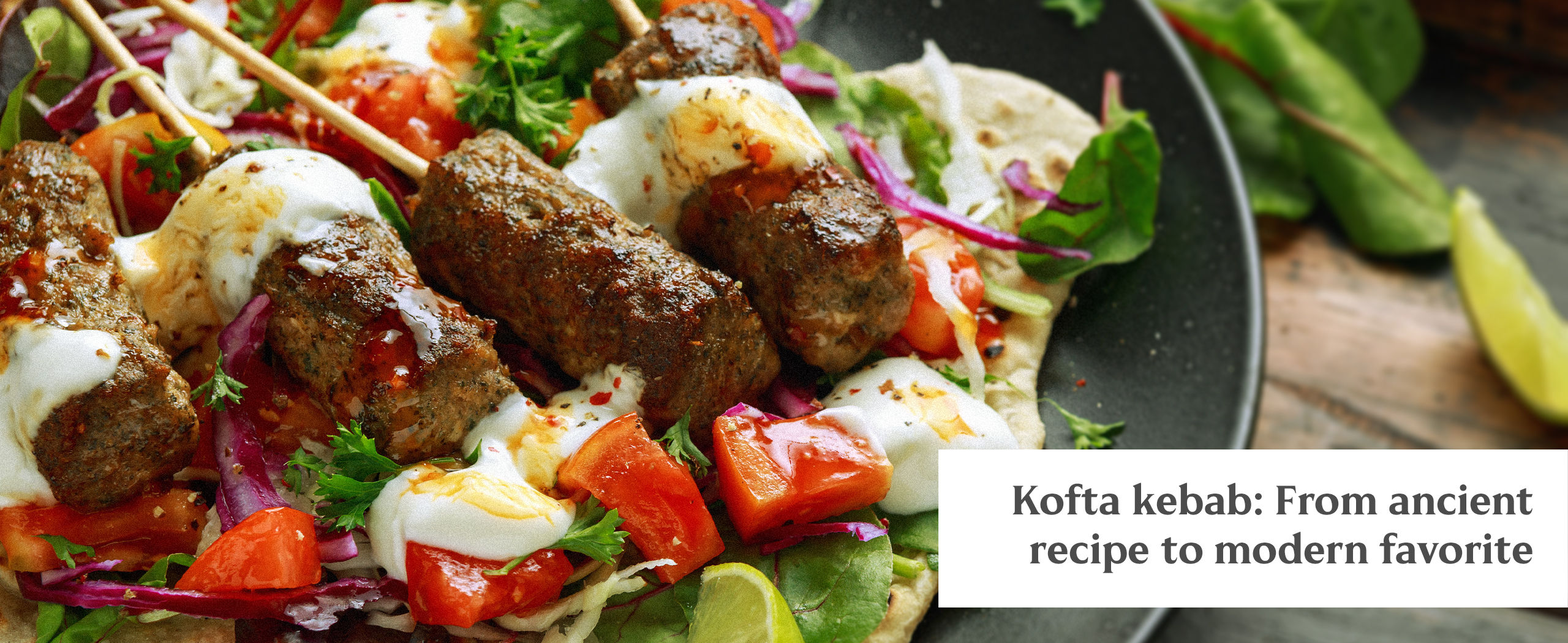No Mediterranean or Middle Eastern takeout meal is complete without an order of crispy, delicious Falafel – and with good reason. If there is one snack item that perfectly captures the essence of Mediterranean cuisine, it is this. A 100% vegan snack, Falafel is made from a mix of chickpeas or fava beans (or both), ground with herbs and spices, formed into balls or patties, and deep fried until golden brown.
Let’s see how the delicious vegan Falafel gained worldwide popularity as a must-have appetizer on any snack platter.
The disputed origin of Falafel
The vegan Falafel enjoys a controversial origin. Some say it dates back to the Egyptian Copts who enjoyed it as a non-meat option during Lent; others say it originated in 19th-century Egypt under British colonial rule. Most food historians agree that Egypt is its birthplace, albeit it has deep roots in the Middle East, especially the Levant.
In Egyptian literature, the earliest documented reference to the vegan Falafel suggests an interesting story leading to its birth in the port city of Alexandria. The myth says the British wanted their chefs to create a local version of foods they enjoyed in India – veggie fritters and fried croquettes. The answer came from fava beans, found in plenty in this part of the world. A delicious blend of fava beans, spices, and herbs, ground together in a mixture, formed, and deep-fried, thus came to life.
While Falafel is the popular name of this beloved Mediterranean snack, it is called by many. The Middle Eastern people make it from chickpeas (garbanzo beans), and call it Falafel – a word believed to have come from the Arabic fūl for fava beans. Egypt and Sudan make it from fava beans but call it taʿmiya (a little piece of food), except in Alexandria, where it is called Falafel. Another theory about the etymology of Falafel suggests it comes from the Arabic word filfil (pepper). Irrespective of where its etymological roots are, today, Falafel is the most common name used worldwide to refer to this Mediterranean favorite.
The global spread of the vegan Falafel
From Egypt to the lands of the wider Middle East, Falafel’s journey continued beyond the Mediterranean Sea. However, when it travelled to the Levant (Palestine, Jordan, Lebanon, and Syria), the main ingredient was no longer fava beans, but rather chickpeas. The Jewish cuisine in the region also integrated this delicious Egyptian snack.
In post-WW2 Europe, Falafel arrived with Turkish, Arab, and Jewish immigrants from the Mediterranean Basin. In the 1970s, Turkish food stands popularized the vegan Falafel among the locals in Germany. By this time, the Mediterranean snack had also reached North America, but was available only in Middle Eastern and Jewish eateries. Today, it is a popular vegan snack item in the region. The growing popularity of vegetarianism has played a big role. Falafel is a healthy and tasty option for many vegetarians anywhere.
Here, it is notable, while the core of its recipe has not changed, minor transformations have occurred as it traveled and adapted to local ingredients and palates.
How is the vegan Falafel made?
Falafel is inherently vegan. It uses plant-based ingredients only. It is made from a mixture of chickpeas or fava beans, or both. The lentils are soaked overnight, and then ground with a bunch of herbs and spices such as parsley, leeks, scallions, garlic, cilantro, cumin, and dry coriander. The choice of spices and herbs may vary slightly depending on the main ingredient(s). The thick and somewhat coarse mixture is then formed into balls or small patties and deep-fried in hot oil until golden and crispy.
When made correctly, the result is a very tasty snack that is super crispy on the outside while its inside is perfectly soft and fluffy. Traditional Falafel is a great source of plant-based protein that is both vegan and gluten-free. However, some pre-cooked or restaurant preparations may use a flour binder, so they are not gluten-free, and it is always wise to check the ingredients or ask the chef for this information.
Why is Falafel so popular today?
In a world where meat-based foods are the most popular, it is not very often that a vegan snack gains traction. However, with food preferences evolving fast, vegan Falafel has come to be perceived as a wholesome snack or meal option – the credit goes to its nutrient-rich composition and versatility.
Falafel is packed with protein, carbs, and fiber, and many micronutrients. Protein and fiber are said to reduce the production of ‘hunger hormones’ and increase the release of ‘fullness hormones’ so you feel satiated for longer. Micronutrients like Vitamin B6, Manganese, Magnesium, Copper, Folate, and Iron are also present in good proportions.
The vegan Falafel is also super versatile. You can enjoy it in many ways. Eat it on its own, in wraps, or as part of salads. It makes an amazing mezze platter with hummus, pita, and tahini sauce, and also pairs well with a Mediterranean-style cucumber salad and Baba Ganoush.
Falafel is food for various religious occasions, which adds to its universal appeal. It is made in bulk by Arab Christians during Lent when they need meat-free foods, and also forms an essential part of Iftar for Muslims.
Concluding words…
Vegan Falafel, once a snack loved by the people of the Mediterranean Basin, is now a food item with a rich global culture. The original recipe has been adapted to local cuisines, and it is enjoyed in many different ways. But, making it from scratch is a labor of love. While some may enjoy that, for others, fully cooked Falafel in the freezer comes in handy for untimely cravings and planned meals.



